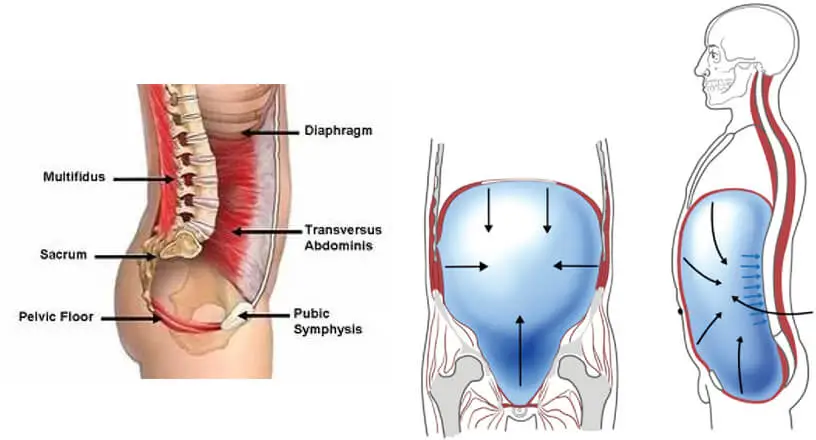When most people are asked about their core, or whether or not they have a core, they immediately think of their abdominal muscles. In particular, they think of their rectus abdominis, the muscle that forms the so-called “6 pack” or “washboard.” Those who go to the gym a lot, or who are more educated about fitness often think of their core as the combination of their rectus abdominis, as well as their obliques and transversus abdominis muscles. They will go to the gym and work their core until they feel a significant burn, and until their chiseled muscles pop through their skin. Because of this, they assume that have a strong “core,” and some do. But in many cases, they are wrong. In many cases, they have created a primary driver of their body’s hip flexion, and several other key motions, and have completely deactivated their diaphragmatic pattern of breathing.
The great Dr. Stuart McGill (University of Waterloo), a chiropractor who does extensive research on the Lumbar Spine, and teaches seminars for Perform Better and several other well-known organizations, said: “Show me a six-pack, and I’ll show you dysfunction.” He’s right. I see entire cross-country teams of athletes who do nothing but 10-15 minute crunch-based ab workouts and have nothing but injuries to the pelvic muscle attachments, hips, IT bands, and knees.
I’ve also seen droves of Low back pain that I believe is caused by the compression strategy through the spinal joints and discs that is required to use the abdominals as a prime mover, particularly of hip flexion–yes, hip flexion! When the diaphragm is not working properly or is downright inhibited by improper use of the abdominals (think abdominal hollowing or sucking in), the psoas (proper hip flexor) doesn’t have a stable structure to pull from and therefore doesn’t initiate hip flexion. So then, if the psoas muscle can’t initiate hip flexion, guess who does? The rectus femoris is one of your main quad muscles. And guess who partners in crime with the quads then? The abdominal muscles. Again, these two structures working inwards to create hip flexion will cause compression, like an implosion on the lumbar spine, rather than the diaphragm and psoas muscles working outward to hip flexion, which is more like an explosion and reduces excessive compression on the lumbar spine.
Before I can get into how to get this mis-mash of bad muscle firing patterns gets straightened out, I must first talk about the diaphragm as the first muscle that needs to start working properly again, the way that it was intelligently designed to work.

For starters, I’ll give you a basic anatomy lesson. The diaphragm is unique to all other muscles in the body in that it forms a domed roof over the entirety of the abdominal contents, attaching all the way around from the bottom of the lower ribs, the sternum, and the lower thoracic spine. Above you can see the view from under it, as if you were standing in the abdomen. You can see how the posterior portions of it even share fascial attachments with the Psoas Major and Quadratus Lumborum muscles. Above where the picture shows, it also forms the floor of the mediastinum (where your heart and major blood vessels lie), as well as the base of the lungs. When it contracts, it goes from a domed shape to being flat like a pancake, pushing down on the abdominal contents, but opening up the lung cavity. This action creates intra-abdominal pressure, which in turn creates a stiffening (think control/stability) of the lumbar spine. Anyone who sucks in their abs and breathes using chest and neck muscles totally throws off this mechanism, and de-stabilizes the lumbar spine!!
Once the lumbar spine is stable, the psoas can now work and continue to work properly, because its superior attachments are all to lower thoracic and lumbar spine vertebrae. If the psoas is doing its job as the main hip flexor, the abdominals, and the quads can do their jobs.

